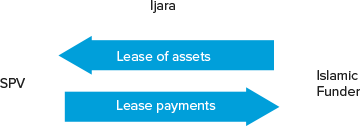1.5.2 Legal and Administrative Approaches to Establishing PPP Frameworks
The diversity of legal traditions and PPP types shows there is no single best way to document and give force to a PPP framework. Rather, the right way to establish a PPP depends on the administrative and legal traditions in the country, and the government’s objectives. This section looks at the various approaches that common law and civil law jurisdictions take to establish PPP frameworks in law and policy generally. It then considers how specific matters such as enforcement, limits on contracts, and adjudication are dealt with in different systems.
1.5.1 How Varying Legal Traditions Interact with Different PPP Types
Countries vary widely in how they document and give force to PPP frameworks. Countries with “common law”[27] legal systems tend to rely on policy documents and administrative guidance materials. Countries with “civil law”[28] legal systems are more likely to enact the PPP framework in statute law, and spell it out in detailed rules and regulations with legal force.
1.5 Choice of Legal and Administrative Instruments to Create PPP Framework
To be effective, PPP frameworks need to be documented. They also have to have some enforcement mechanisms. Governments need to make the following decisions.
1.4 Scope of the PPP Framework
The scope of the PPP framework indicates the types of projects for which the framework will apply. Scopes are generally defined by jurisdiction, sector, size, and contract type. It is good practice for designers of a framework to consider each of these dimensions, and to be explicit in the framework about its scope. These aspects are explored in the remainder of this section.
1.3 Objectives of the PPP Framework
As introduced in chapter 1.9, governments should adopt a structured and programmatic approach if they want to rely significantly on the PPP model for new infrastructure development. This is a way to attract stronger and more consistent interest from the private sector. In this sense, a PPP program may be defined as the ways in which the government plans to use PPPs to achieve improved infrastructure service provision. This goes beyond the PPP pipeline to include plans to develop additional and, as yet, not identified projects.
1.2 What is in a PPP Framework?
A PPP framework should guide governments and private partners through each step in developing a PPP, ensuring that projects are well structured and delivered in line with expectations. The PPP framework will achieve this by outlining procedures and decision rules for various institutions, and by ensuring effective public financial management and oversight.
1.1 Why have a PPP Framework?
A good PPP framework aims to ensure that the right projects are selected as PPPs, and that they are developed, delivered and managed in a structured, transparent and efficient way. Equally, a good framework minimizes the risks that a PPP project will not deliver Value for Money (VfM).
Introduction and Purpose
A PPP framework is best understood as the established procedures, rules and institutional responsibilities that determine how the government selects, implements and manages PPP projects. By setting procedures and rules, good PPP practice can be established within the government. This has the effect of limiting and managing government risk and ensuring consistency. By defining institutional responsibilities, a PPP framework makes institutions accountable for their role in the PPP process.
9. Tangible and Intangible PPP Project Assets
Islamic financing of a PPP project normally assumes an asset-based project financing that requires the transfer of tangible/real assets. However, there may be some situations where the transfer of tangible/real assets is not permitted. For example, if a PPP project asset is of cultural and/or strategic importance, then the procuring authority may not permit its physical transfer. If this is the case, then a variation of the combined use of the istina’a and ijara is used.
8. Islamic Financing in Practice
The combined use of an istina’a and ijara can be illustrated in figure B1. as follows.
FIGURE B1: Combined Use of Istina’a and Ijara


